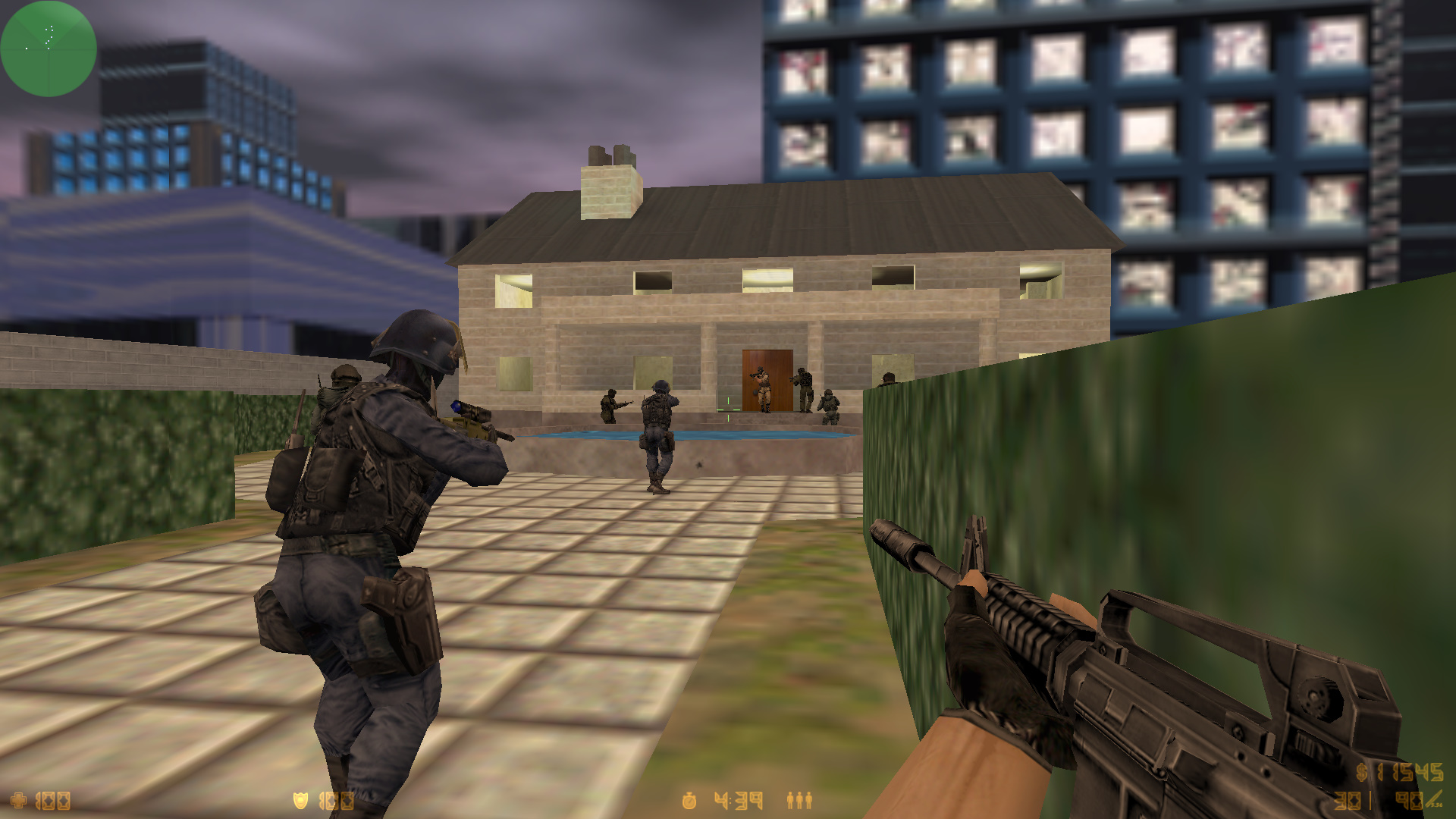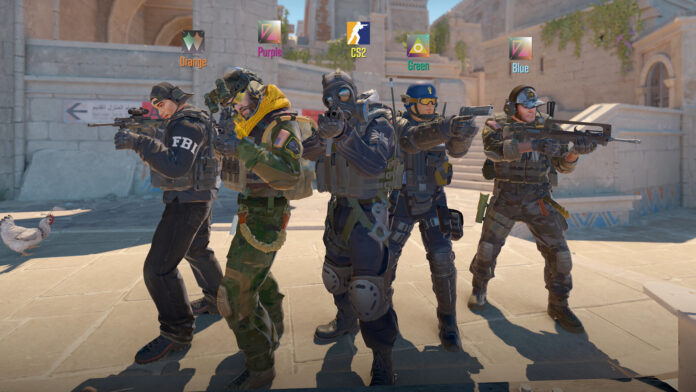An original CS version became the foundation of esports as we know it today. It changed how we think about competitive gaming forever. The game launched in 1999 as a mod for Half-Life. It quickly gained massive popularity worldwide. Players fell in love with its simple yet deep gameplay.
The game pits terrorists against counter-terrorists in round-based matches. Teams must complete objectives or eliminate opponents to win. Its realistic approach to combat was revolutionary. The tactical elements made every match intense and exciting. Counter-Strike 1.6 in sports gaming remains a timeless classic even today.
The Birth of a Gaming Legend
The humble beginnings of Counter-Strike tell an amazing success story. Two programmers created it as a passion project in their free time. Minh Le and Jess Cliffe never expected their mod to change gaming history. The first beta version surprised everyone with its quality and fun factor.
Valve Corporation saw the potential and purchased the rights in 2000. They transformed the mod into a standalone game. The “1.6” version refers to the final major patch number. This version perfected the gameplay formula. The balanced weapons and maps showed incredible design skill. The game proved that simple gameplay could create deep, competitive experiences.
Gameplay That Defined an Era
Gameplay loop seems basic but offers endless depth. Each round gives players money to buy weapons and equipment. Smart economic decisions became as important as a good aim. Teams need to work together to succeed against skilled opponents.
The timeless classic in sports games featured perfect weapon balance. The AWP sniper rifle could kill with one shot. The AK-47 rewarded precise aim with headshots. Flashbangs and smoke grenades added tactical layers. Map knowledge became crucial for competitive play. Players spent thousands of hours mastering spots and angles. This depth keeps people playing even decades later.

Maps That Became Cultural Icons
Map designs in this shooter set standards for competitive gaming spaces. Dust2 became perhaps the most famous map in gaming history. Its perfect balance and simple layout made it instantly playable. The bomb sites offered different tactical approaches for both teams.
Other maps like Nuke and Inferno became equally legendary. Each had unique features that required special strategies. The train demanded precise shooting through narrow spaces. Italy offered a change of pace with its hostage rescue mission. These maps became more than game levels. They transformed into virtual sports arenas where legends were made. This timeless classic in sports games created virtual spaces that players can still navigate from memory.
The Economics of Skill
Players earned money for kills, wins, and completing objectives. The tactical shooter introduced a revolutionary in-game economy system. Poor performance meant fewer pieces of equipment in the next round. This system created natural comeback mechanics and strategic depth.
The economic decisions created fascinating team dynamics. Should you save money for future rounds or fully equip now? When should a team do an “eco round” with minimal equipment? These strategic elements helped the game become a timeless classic in sports gaming. The economic system added chess-like thinking to a shooting game. Teams needed both tactical intelligence and quick reflexes to succeed.
The Rise of Competitive Gaming
It helped establish esports as we know them today. Major tournaments drew huge crowds in the early 2000s. Players like HeatoN and SpawN became famous for their skills. The competitive scene offered perfect conditions for high-level play.
Teams like SK Gaming and fnatic built their legacies on this classic title. Prize pools grew from hundreds to thousands of dollars. LAN events became cultural gatherings for the gaming community. Competitive integrity remained central to the experience. The shooter demonstrated that video games could be legitimate competitive events. This timeless classic in sports gaming paved the way for today’s billion-dollar esports industry.
Community and Modding Culture
The Counter-Strike community became known for its creativity and passion. Players created thousands of custom maps and modes. Surf maps tested movement skills in impossible environments. Zombie mods created entirely new gameplay experiences. The game’s flexible architecture encouraged this innovation.
Server owners could customize nearly every aspect of the experience. Special plugins added ranking systems and unique features. Community servers became social hubs for players. Many friendships were formed through regular play on favorite servers. This community aspect kept the game alive long after newer versions were released. The mod-turned-phenomenon showed how player communities could extend a game’s lifespan dramatically.
Technical Limitations Become Strengths
The classic shooter ran on the ancient GoldSrc engine with many limitations. The graphics looked dated even when first released. Animation quality was basic by today’s standards. These limitations helped the game succeed. The low requirements meant almost any computer could run it.
Schools, internet cafes, and offices became impromptu gaming venues. The simple visuals made gameplay clarity excellent. Players could instantly identify enemies without visual clutter. The timeless classic in sports games proved that gameplay matters more than graphics. The technical simplicity made the competitive experience pure and accessible.
Global Impact Beyond Gaming
The tactical FPS transcended gaming to influence broader culture. Internet cafes built their businesses around hosting CS matches. The game taught teamwork and strategic thinking to millions. Many professional players found careers through their skills.
The game crossed cultural and language barriers effortlessly. Russian, Swedish, Brazilian, and American players competed on equal footing. Strategies and callouts entered gaming vocabulary permanently. Maps like Dust2 became instantly recognizable cultural references. This reach helped legitimize gaming as a global competitive activity. The impact of this pioneering shooter continues to resonate today.
Legacy and Continued Relevance
Even with newer versions available, many players remain loyal to the original. The clean gameplay and perfect balance keep them coming back. Competitive tournaments for the classic version still happen regularly. Nostalgia plays a role, but the quality stands on its own merits.
Modern games still copy elements from the Counter-Strike formula. The economic system, round-based structure, and map designs influence new titles. Professional players who started with version 1.6 now coach new generations. The pure competitive spirit lives on in today’s esports scene. The game stands as proof that truly great design never becomes outdated. This shooter created a blueprint that continues to influence developers worldwide.
Conclusion
Counter-Strike 1.6 earned its status as a timeless classic in sports gaming through perfect design. Its balance of accessibility and depth remains unmatched. The game created competitive opportunities for players around the world. Its influence on esports cannot be overstated.
Two decades later, the shooter still boasts an active player base. New generations discover its brilliant simplicity every year. The lessons of this iconic title continue to shape gaming culture. Few games can claim such a lasting impact across generations. The competitive classic will forever stand as the moment video games became legitimate competitive sports. For more thrilling & exciting information about sports gaming folllow DP world news.






